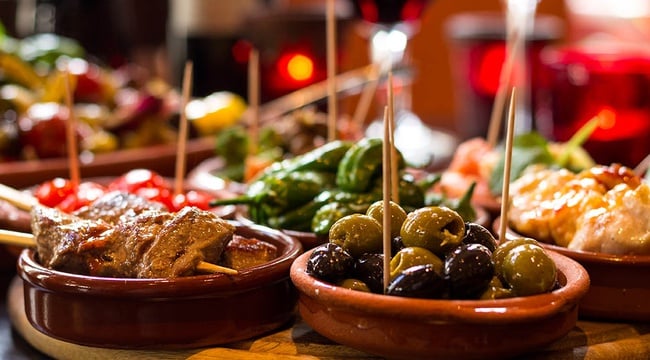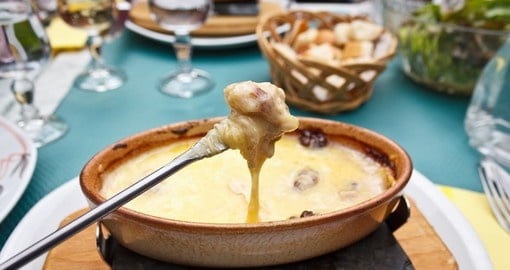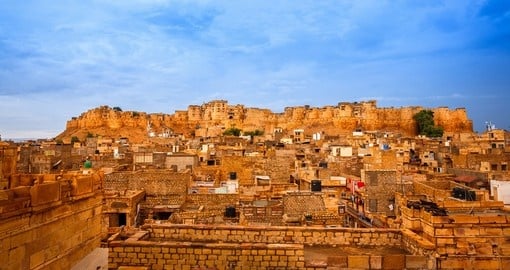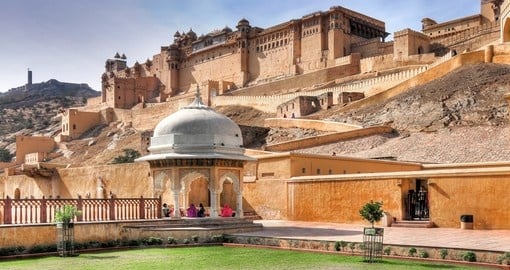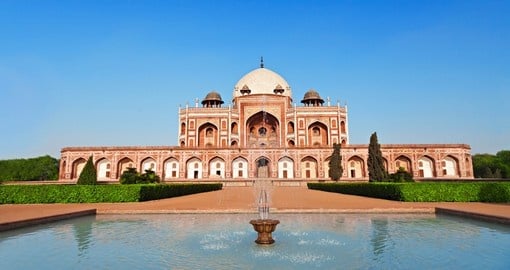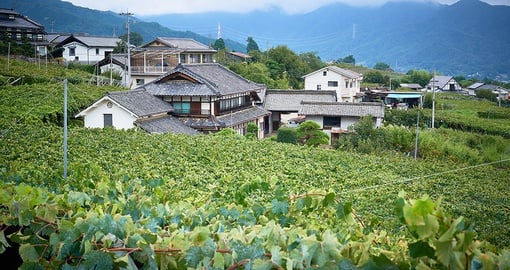You have been on your feet most of the day checking out the highlights of your chosen destination. As the day goes on, it is time to not only slow down and relax but also to round off the day with a good meal. There are literally thousands of restaurants on the planet, so this is not an article with recommendations about where to eat, but more a guide to discuss the qualities of individual countries’ cuisines.
I also offer a few suggestions as to where to look for that special restaurant that might appeal to the discerning traveller. The following are just a handful of countries offering good food. Space does not allow for more.
1. Italy

Italy has produced many mouth-watering dishes and you will find excellent food everywhere in this country. Let’s start with a few special cities. Did you know that the pizza originated in Naples? That’s why every year for two weeks around May/June there is a Pizzafest when, I am told, around 100,000 pizzas are consumed and a contest takes place to decide who makes the best pizza. The gastronomic capital of Italy is Bologna. Think Spaghetti Bolognese. Try one of the restaurants in the Quadrilatero off Piazza Maggiore where you will find restaurants under the mediaeval arches. Not to be confused with ice cream, gelato, which means “frozen,” is made from natural ingredients and originated in Florence. There is a gelato festival held there annually as well as in other Italian cities. If you like ham, go to Parma in the Po Valley in Northern Italy. For desserts try Sicily, especially Palermo—cannoli anyone? When in Rome… well, head to the district called Trastevere where you will find many fine restaurants, some of which are outdoors. If you want to try your hand at preparing food, check out the cooking classes and courses in Tuscany.
2. Spain
Spanish cuisine is distinctive although not, perhaps, as well-known as French or Italian. The first thing to try is a cafe/bar/restaurant that serves tapas, an appetizer or snack that will fill a hole whenever you feel hunger pangs. It was invented in the 13th century to accommodate a certain king who was not allowed to eat very much. Usually, the location will exclusively cater to tapas and if you really want a full meal, simply combine several tapas. Three cities that have a reputation for excellent tapas are Seville, Granada, and San Sebastian. Another highly recommended item of cuisine on a Spain vacation is pintxos. This is very similar to tapas, but found in the Basque district of this country. San Sebastian has numerous pintxos bars. A very typical Spanish dish is paella, a mix of saffron-flavoured rice and various types of meat. It originated in Valencia, but can be found everywhere. You may find it has to be made to order, but the effort is usually worth it. Soups in Spain? Yes! Two that are typical are the cold soup, gazpacho, and the hot one, garlic soup (sopa de ajo). There are other types of soup found regionally. Here’s something to think about: the finest grade of jamon (ham) comes from free-range pigs that eat mostly acorns! Try it in Seville or Cordoba.
3. Greece
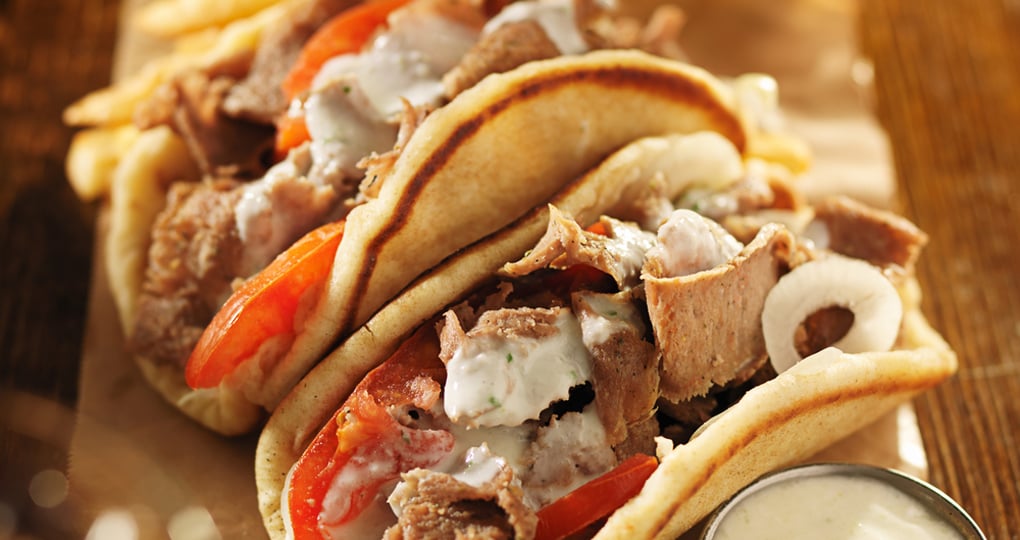
You may not think of Greek cuisine as gourmet, but it has its own merits for consumption. If you find yourself in Athens, be sure to head to nearby Piraeus and dine at one of a long line of fish restaurants by the harbour and, weather permitting, preferably at an outdoor establishment where you can enjoy wonderful views watching boats bobbing up and down in the water. Of course, fresh fish is available anywhere near the sea on a trip to Greece. A very typical Greek dish is moussaka, an oven-baked dish with layers of minced meat, eggplant (aubergine), and spices that's topped with cheese, sometimes potato. Meals in Greece are invariably accompanied by olives and no wonder; Greece has been cultivating olives for thousands of years. Dolmades is basically a folded vine leaf to which vegetables, minced meats, and maybe rice, herbs, and nuts are added. This dish varies from region to region. Not perhaps for the faint of heart, but you might want to try octopus, which is stewed in wine. Athens has an annual street food festival in May, but if you miss it, your next best bet is to eat at La Plaka. It is an open-air square full of restaurants catering somewhat to tourists, but don’t be put off. Before or after your meal, you can enjoy the street musicians, flower sellers, and much more in the adjoining area.
4. Switzerland
What comes to mind when you think of Switzerland? After Swiss army knives and commercial banks. it’s probably cheese and chocolate, two very different types of food. Swiss cuisine is influenced by different cultures, which include German, French, and Italian. Let’s start with cheese, which comes directly from the alpine pastures and of which there are over 400 different types of cheese. Each region of the country has its own types of cheese. Names we all know include Emmentaler and Gruyere and possibly, the lesser-known Appenzeller and Vacherin. You can enjoy a cheese fondue, which consists of melted cheese and bread cubes; you can eat raclette, a dish of melted cheese with potatoes. The Swiss have been making chocolate ever since the 17th century, usually milk chocolate. To illustrate how big an industry chocolate is, the industry employs around 4,500 people. Big names are Lindt, Toblerone, and Nestle. Another famous dish found on a Switzerland vacation is rosti, a kind of hot cake made of potatoes and roasted in butter or fat and muesli, cold oatmeal containing rolled oats and other ingredients such as grains, nuts, seeds, and fresh or dried fruits—it's very healthy. Just to show how important food is to the Swiss, the Zurich Food Festival attracts 60,000 visitors annually.
Chocolates & Cheese Swiss Self-Drive: Interlaken & Zurich
FIRST-CLASS | SELF-DRIVE: Sample the visual and culinary delights of the Alps on this delicious Switzerland tour. Arrive in Zurich, then explore the charming cities of Bern and Lucerne, and spend most of your time at picturesque Interlaken, in the heart of the Alps all while travelling at your own pace.
More Details5. Japan
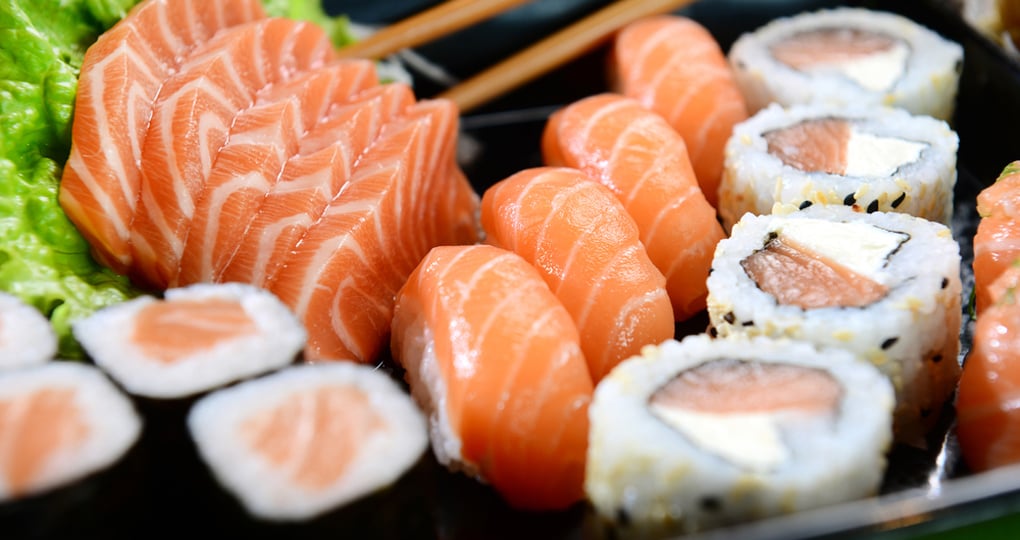
Let’s start with an interesting fact about Japanese food: it is traditionally based on variety and a balance of ingredients. You will find five colours are used in the ingredients, five cooking techniques such as raw, grilled, steamed, boiled, and fried, and five flavours such as sweet, salty, sour, bitter, and umami. It is said you will find all five flavours in most meals. Everyone knows sushi, the source of which goes back to ancient times when fish had to be preserved in fermented rice. Another traditional Japanese dish is tempura, which consists of battered fish or seafood deep-fried. In Tokyo, it is typically served with a dipping sauce, while in Kyoto it is dipped in flavoured salt. Many meals on a Japanese vacation will invariably start with miso soup usually made from fish stock combined with bean paste. Noodles are noodles? Well, in Japan, the most popular and common to this destination are udon noodles made from wheat flour, thick and chewy and soba made from buckwheat flour. Want something totally different in Tokyo? if you are looking for unusual restaurants, you can find them with robots, monsters, or skeletons for company or even an Alice in Wonderland setting. If you want to immerse yourself in Japanese culinary culture, find a restaurant where you sit on a mat with your feet under a low table—perhaps not that comfortable and not for everyone?
6. India
Indian cuisine is known worldwide with food like curry, samosas, poppadums, tandoori chicken, among other dishes, and also generally considered spicy or savoury. Well, yes, Indian food is very heavily spiced. Think of all the spices that are used in the preparation of dishes—cardamom, turmeric, cumin, chilli, garlic, ginger, coriander, and cloves to name a few. And when it comes to desserts, the spices used include cinnamon and nutmeg. The staples in Indian food include rice, whole wheat flour, and lentils. In the south of India, fruits are popular, using bananas and coconuts as ingredients and milder spices such as cinnamon and nutmeg. Many dishes have arisen owing to various religions such as Hinduism, Sikhism, and Islam, and other ancient traditions. Muslims do not eat pork, therefore lamb and chicken can be predominant. In many Indian states, the slaughter of cows is forbidden by law, which means beef will not be found everywhere. If you find spicy food something that is fine only in moderation, most hotels provide a Western-style breakfast and for other meals, a buffet with less spicy dishes and salads. India’s national fruit is the mango and there are around 500 different varieties of this fruit. One last word about Indian cuisine. Why is it spicy? Spices traditionally prevent food from spoiling and remember, the climate in India is hot.
Legendary Rajasthan: Jaisalmer, Pushkar, Jaipur & More
FIRST-CLASS | PRIVATE-GUIDED: Two weeks to fully experience the flavour, colour and pageantry of Rajasthan. Rich in history and legend, you will never forget this experience whether it be the palaces, the people or the culture.
More Details7. Argentina
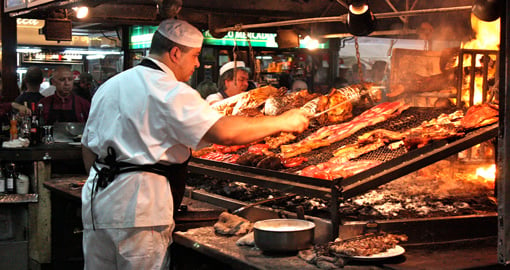
The national dish of Argentina is beef. There are many large cattle ranches in this destination catering to the average Argentine’s love of this commodity. Now many dishes contain meat but are prepared in many different ways. There is parillado, literally meaning grilled. Steak prepared this way is called churrasco and should you see the name churrascaria outside a restaurant, expect generous portions of steak and other cuts of beef. Beef roasted over an open fire is called asado. Carbonada is a tasty stew, which contains meat, potatoes, sweet potatoes, and corn on the cob. If you're in Patagonia, you can find a whole lamb or pig being roasted over an open fire. Another typical item of Argentine cuisine is the empanada, a pastry turnover filled with savoury ingredients that are baked or fried. They are usually shaped in half-moons and can vary in size. On the sweeter side, you will also find dessert empanadas, which are filled with jam and/or dulce de leche (literally caramelized condensed milk spread). A word to the wise on travel to Argentina: don’t expect to have dinner at a restaurant at typical North American times. Argentines like to eat late starting around 9 pm.
8. Kenya/Tanzania
These two destinations have been lumped together because they have so much in common and most North American visitors end up in these destinations to observe the amazing wildlife that is on display. From a food perspective, probably, the North American visitor would not be terribly interested in consuming the staple food items that turn out world-class local athletes— maize, millet, and sorghum eaten with different kinds of meats and vegetables. The most common local dish in Kenya is a cornmeal starch made into a thick paste known as ugali. The most popular foods are fresh from farms, lakes, and the Indian Ocean (for fish). Common vegetables include kale, spinach, cabbage, tomatoes, beans, potatoes, avocados, and other leafy greens. Fruits include mangoes, oranges, pineapples, bananas, papaws, and pears. Tea and coffee are excellent. There is one special restaurant in Nairobi called the Carnivore, which offers unusual dishes reflecting the attraction of wildlife viewing. As you enter the restaurant, you will see an open-air barbeque pit cooking beef, pork, lamb, and chicken, plus game meats such as crocodile, ostrich, and maybe even camel. There was a time when you could indulge in zebra, wildebeest, and kudu, but these have now been banned.
9. South Africa
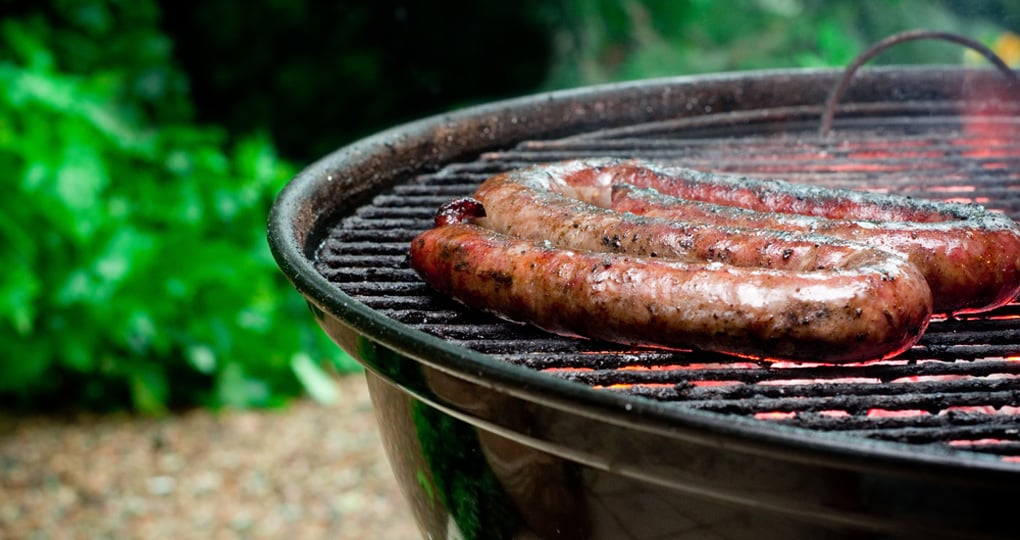
As you might expect, South African cuisine draws from both European and African influences. Some dishes are pretty well Indigenous to this destination. Biltong is a kind of dried, cured meat ranging from beef to game meats. It can be compared to beef jerky, but the typical ingredients, tastes, and production processes are different. Boerewors is a type of sausage that is popular in South Africa. The name comes from the Afrikaans words boer meaning farmer and wors meaning sausage. The important difference between boerewors and regular sausage is that the former must be almost pure beef, with very little fat. As for eating game meat, the rule is if the animal eats other animals, it’s off-limits. So, consider kudu, wildebeest and ostrich. The latter is served up in every possible way of being prepared at the restaurant at the Ostrich Farm just outside Oudtshoorn—fillets of, burgers, and so on. On the sweet side, try the melktert, Afrikaans for milk tart, a dessert of pastry containing a custard filling made from milk, flour, sugar and eggs, not unlike a Portuguese tart or try a malva pudding, which contains apricot jam and has a spongy caramelized texture with cream sauce often poured over it. Three are two types of cuisine to investigate on a South Africa vacation. One is a braai, literally barbeque, during which you usually eat the resulting meats al fresco. The other is Cape Malay cooking which was introduced by the slaves brought into South Africa and is characterized by its use of spices such as nutmeg and chilli peppers. Bobotie is one dish that has Cape Malay origins consisting of spiced minced meat baked with an egg-based topping.
21 Feb 2020, 2:39 p.m.


